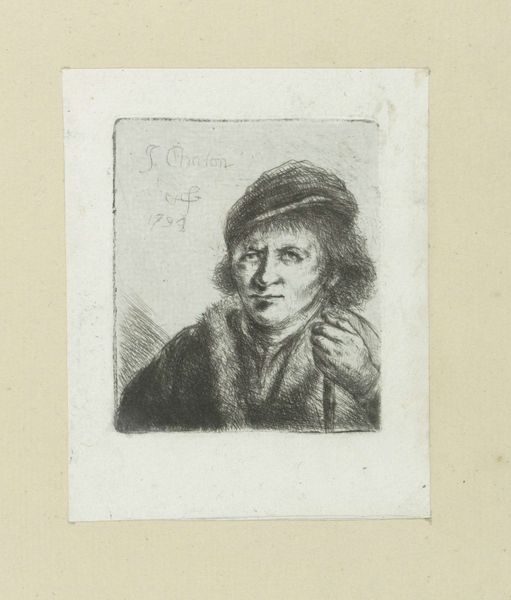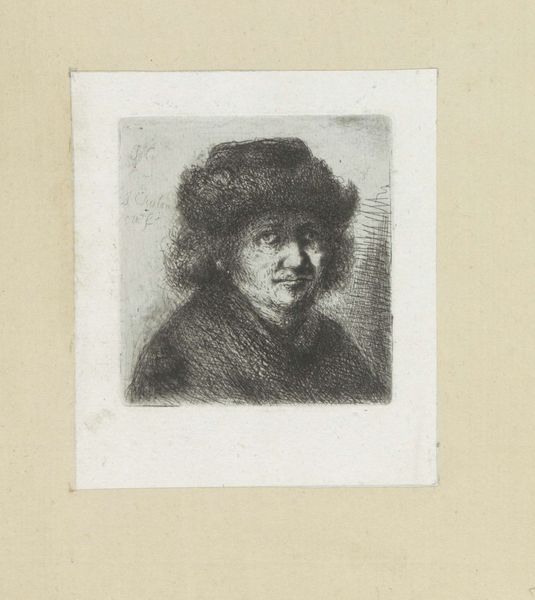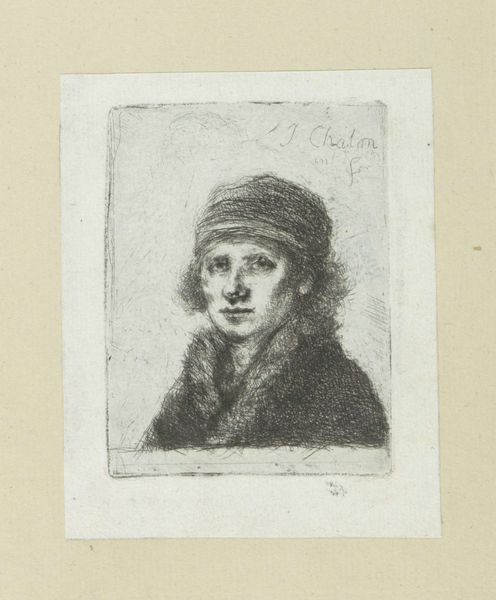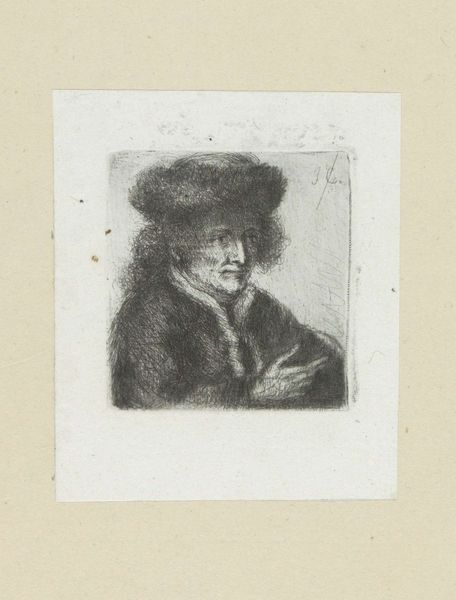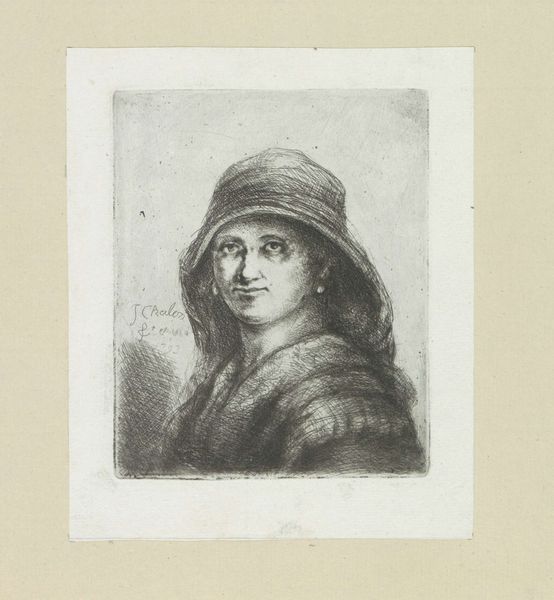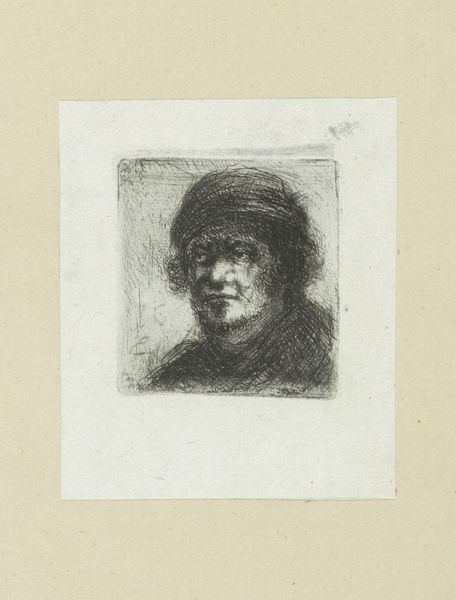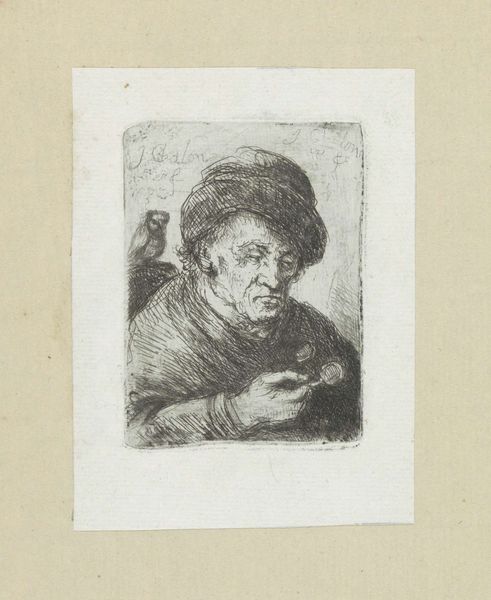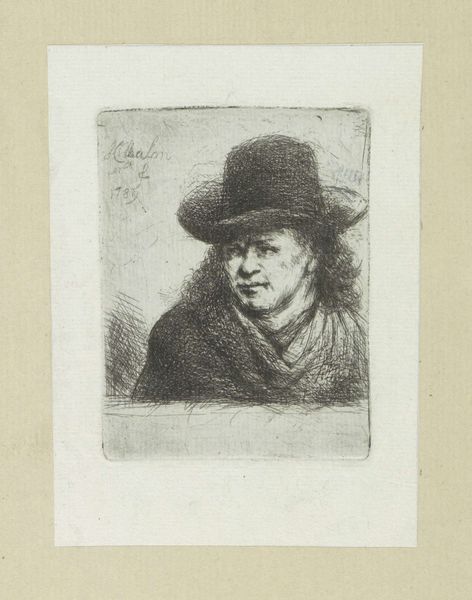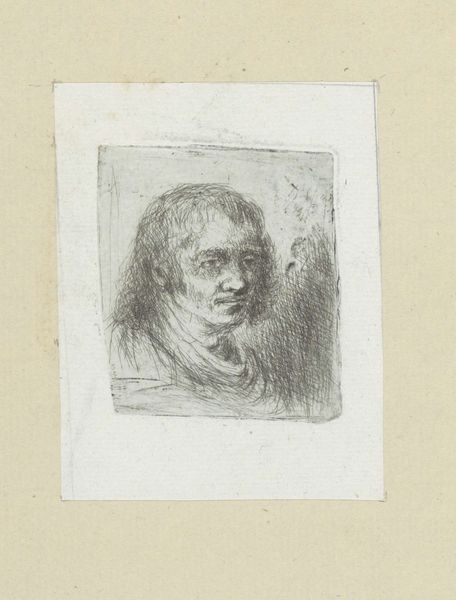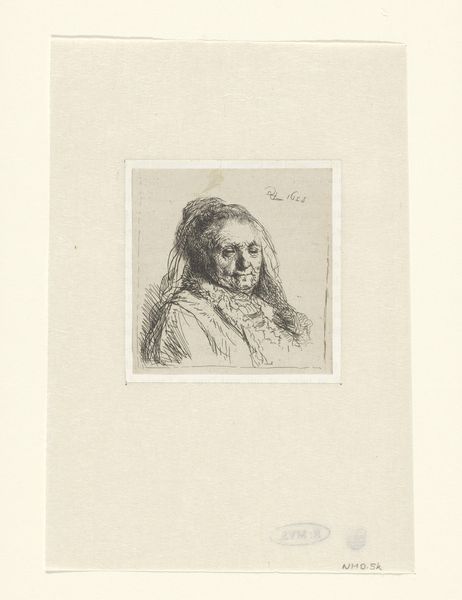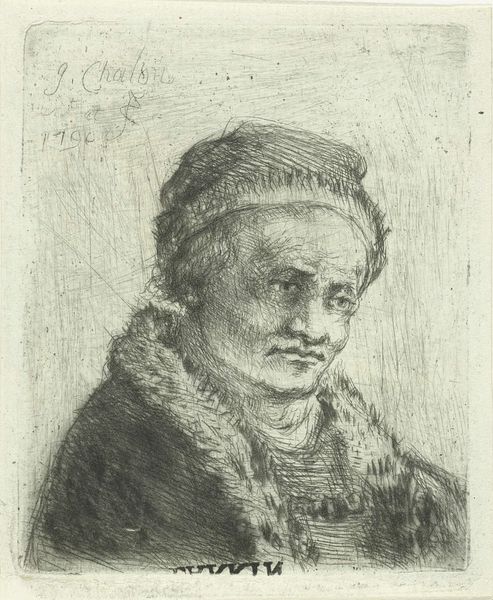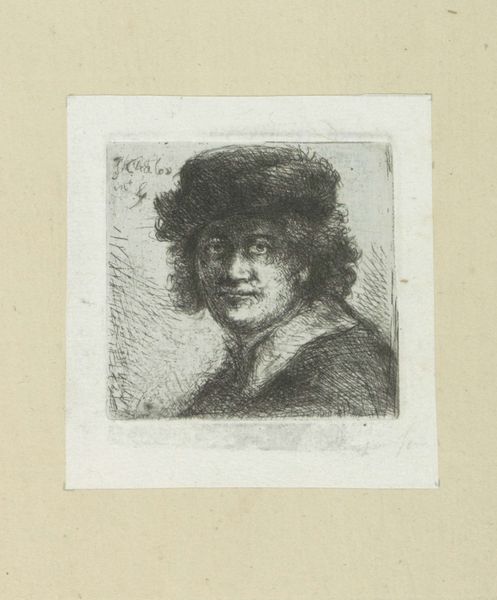
drawing, print, paper, ink, graphite, engraving
#
portrait
#
pencil drawn
#
drawing
#
neoclacissism
# print
#
pencil sketch
#
charcoal drawing
#
paper
#
ink
#
pencil drawing
#
graphite
#
graphite
#
engraving
Dimensions: height 90 mm, width 72 mm
Copyright: Rijks Museum: Open Domain
Editor: This is "Volwassen man met bontkraag," created between 1790 and 1802 by Jan Chalon. It's a drawing or print, seemingly in graphite and ink on paper. The subject's expression feels very introspective. What aspects of the work strike you as most significant? Curator: Given the date and the artist’s neoclassical influences, it's worth considering this piece within the socio-political context of the late 18th century. Portraiture served distinct functions. How do you think images of men – specifically those with the markers of wealth seen here, like the fur collar – were consumed and understood publicly at that time? Editor: I hadn’t thought about how fur might indicate a certain status. Maybe these portraits functioned almost like public announcements? Displaying wealth or social standing? Curator: Precisely. Prints like this circulated widely. Think about the rise of the merchant class, the enlightenment ideals circulating, and consider who might have purchased this print and where they might have displayed it. Was this for personal enjoyment or public consumption? Editor: So the image’s value isn’t just artistic but also social. A way to understand how society saw itself? Curator: Exactly! These images both reflected and shaped the perceptions of power and status. By analyzing them, we gain insight into the values of that society, perhaps also into shifts in power, who wants to be seen as powerful, and what kind of aesthetic they valued. Editor: I’ll definitely look at portraiture differently now. Seeing art as part of a bigger social and historical conversation makes it way more engaging. Curator: Indeed. Art doesn't exist in a vacuum. Context unlocks deeper meaning.
Comments
No comments
Be the first to comment and join the conversation on the ultimate creative platform.
